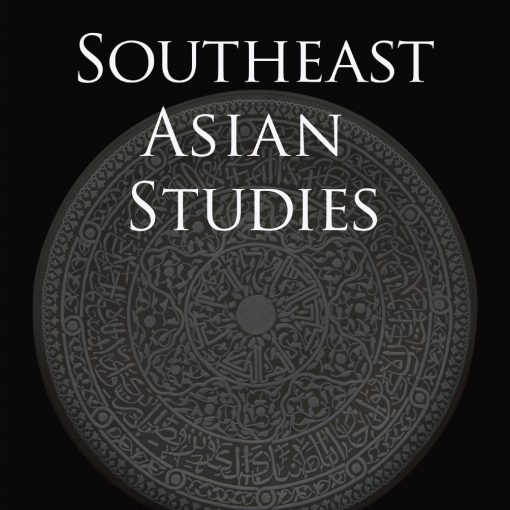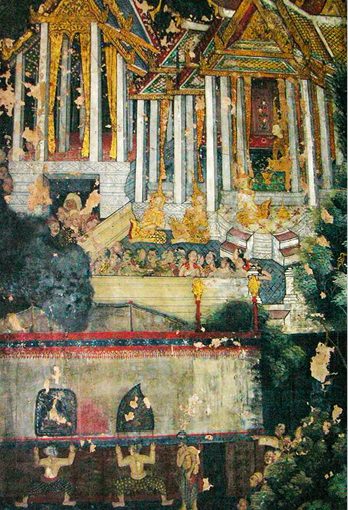Contents>> Vol. 9, No. 1
The Greater East Asia Co-Prosperity Sphere: When Total Empire Met Total War
Jeremy A. Yellen
Ithaca: Cornell University Press, 2019.
This book is probably the first English book exploring the rise and fall of the Japanese Empire during the late 1930s and early 1940s with a particular focus on Japan’s ambiguous relationship with two Western colonized countries in Southeast Asia, Burma and the Philippines. As the author, Jeremy Yellen, clearly points out in his introduction: “there are no book-length monographs in English that explore the Japanese Co-Prosperity Sphere from the perspective of Japanese high policy” and former “English-language literature on the Sphere often focuses on the initial stage of the Pacific War” (p. 11). In other words, the “brutal” aspects of the Japanese occupation, such as the attacks on Pearl Harbor as well as the Naval Battle of Malaya, and US withdrawal from the Philippines and the ensuing “Bataan Death March,” have attracted English-language scholarly circles. With his excellent command of Japanese and use of rich Japanese sources, however, Yellen reveals the ambivalence evident in Japan’s policy making and implementation of the Greater East Asia Co-Prosperity Sphere. On one hand, the empire attempted to bring liberation to the people in the sphere; but on the other hand, it turned out to be yet another imperial/colonial order in the region. This perspective is most clearly explained in the book’s conclusion, which states that Japanese tensions “between idealism and self-interest, between utopian dreams of and the realist pursuit of national power, were shared among modern empires” (p. 206). The reviewer believes this insightful statement dismantles the “Orientalist” image of the Japanese Empire, reinforced in academic scholarship, and will generate further English-language research on the topic through comparisons with other empires of the twentieth century.
The book consists of two parts: a discussion of the rise and fall of the Japanese Empire, followed by an examination of the counterreactions as well as commitments from “liberated” Burma and the Philippines under the Greater East Asia Co-Prosperity Sphere. The first three chapters focus on the challenges confronted by Japanese policy makers, represented by the figure of Matsuoka Yōsuke, and pay close attention to Japanese diplomatic tensions with the great powers: Germany, Italy, Russia, the United Kingdom, and the United States. Chapter 1 discusses the signing of the Tripartite Pact between Germany, Italy, and Japan in 1940 and explains the ambition of Japanese politicians and diplomats who, encouraged by the victory of Hitler’s Nazis ruling Netherland and France, envisioned Southeast Asia as a potential imperial territory. Chapter 2 focuses on the thought and diplomatic action of Matsuoka, who persisted in peaceful negotiations within Asia in order to build Japanese leadership in the region. By signing the Soviet-Japanese Neutrality Pact in 1941, Matsuoka designed a new world order divided into four blocs: Western Europe, Russia, America, and East Asia. Although Matsuoka was relieved of the position of foreign minister on the eve of Japan’s participation in the war, his Monroe ideology of “self-existence and self-defense” in Asia was assertively advocated in wartime Japan. Chapter 3 examines Japan’s unclear war aims by paying attention to the ideology of hakkō ichiu, which was translated by the government as “universal brotherhood” (p. 95). This Asian brotherhood was advocated in order to hide the true aim of Japan, whose empire was now in greater need of acquiring resources than building the co-prosperity sphere.
The next three chapters, in the second part of the book, look at the reactions of Burma and the Philippines, which were “granted” independence in 1943 by the Japanese Empire. Chapter 4 examines the Burmese and Filipino political elites’ motivation for collaborating with Japan, which was rooted in their nationalistic desire to decolonize their countries. Chapter 5 examines the impact of the two countries’ independence in the sphere, with a particular focus on the Greater East Asia Conference held in Tokyo in 1943. The seven leaders from the sphere attended this conference: Ba Maw (Burma), Zhang Jinghui (Manchuko), Wang Jingwei (Chinese Nanjing regime), Tōjō Hideki (Japan), Wan Waithayakon (Thailand), Jose P. Laurel (Republic of the Philippines), and Subhas Chandra Bose (Provisional Government of Free India). Utilizing the Japanese rhetoric of “independence and autonomy,” Yellen shows that leaders such as Wang and Laurel expressed their frustration toward the idea of Greater East Asia, which did not give equal rights to the countries in the sphere. The final chapter describes the patriotic acts of political leaders, particularly Ba Maw and Aung San from Burma, and Laurel from the Philippines. In demonstrating the three leaders’ creation of new governmental institutions, Yellen claims that the Greater East Asia Co-Prosperity Sphere was not a wholly one-sided affair, as has long been argued.
This reviewer basically agrees with Yellen’s perspective. The book, however, has some shortcomings. As the author himself admits in the preface, one of the anonymous reviewers pointed out that he needed to reframe his argument in a more persuasive manner. The reviewer was also not able to find a clear reason for comparing Burma and the Philippines under the Greater East Asia Co-Prosperity Sphere, despite their commonality of independence in 1943. This alludes to the fact that the author was not able to put Burma and the Philippines in the book title, and instead mixed the countries together as part of the “total empire.” As Yellen insists, it is true that political leaders such as Aung San and Laurel were patriots and that was their motivation for collaborating with Japan. But this juxtaposition simply conceals the postwar differential treatments of Aung San and Laurel. During the last months of the war, Aung San led the anti-Fascist—thus anti-Japanese—underground society (Anti-Fascist People’s Freedom League), and such resistance continued when the British forces came back to Burma after the war. During the struggle for independence against Britain, Aung San was assassinated; and he has since been a respected national hero. On the contrary, Laurel did not have a choice when it came to leading anti-Japanese forces. He was asked by Commonwealth President Manuel Quezon, upon his retreat from Manila to Corregidor together with Douglas MacArthur after the landing of Japanese forces, to remain in the top echelons of government to deal with invading Japan. As is well known, MacArthur fulfilled his promise and returned to “liberate” the Philippines from Japan from 1944 to 1945. Such heroic icon of MacArthur strengthened the “traitor” image of Laurel as collaborator among Filipino people. On July 4, 1946 the Philippines gained its independence, supported by the United States, and this US-Filipino friendship further strengthened Laurel’s pro-Japan image for a long time.
In the case of Burma, the issue of “collaboration” did not generate so much controversy at either the political or scholarly level. In the case of the Philippines, compared with other countries in Southeast Asia, this issue remained one of the most heated topics in political and scholarly circles, due to the US-Filipino friendship. In fact, Filipino “nationalist” historians, such as Armando Malay, Alfredo Saulo, and Teodoro Agoncillo, sought to complicate the portrayal of collaborators by factoring in their patriotism. These historians’ writings were widely read by Filipino scholars and students but were not considered worthy by Carl Lande, David Steinberg, and Alfred McCoy, American historians based in the United States. In fact, the American historians more or less demonstrated the oligarchical nature of the Filipino act of collaboration. In his conclusion in Philippine Collaboration in World War II, for example, Steinberg equates collaboration with “treason” and points out, “(T)he difference between the oligarchic collaboration with the Spanish and American authorities and the later collaboration with Japan is that the first two occurred before a Philippine nation had emerged, while the last took place when national self-consciousness existed” (Steinberg 1967, 176). By comparing the Philippines’ collaboration with the Spaniards and Americans, Steinberg points to the immature nationalism of Filipino oligarchical elites who betrayed the friend (the United States) and stood by the alien (Japan). If Yellen persists with the thesis of patriotic leaders, he needs to address this discrepancy in perspective between Filipino and American historians on the collaboration.
Lastly, as a Japanese, the reviewer found something not right with the use of the term “Greater East Asia Co-Prosperity Sphere” without mentioning its “banned” postwar history. The term “Pacific War” was invented during the General Headquarters/Supreme Commander for the Allied Powers operation of Japan (1945–52). It did not mention Asia, and it banned the Japanese imperial—but local—term “Daitōa Sensō” (Greater East Asian War) together with “Greater East Asia Co-Prosperity Sphere” in order not to resurrect Japan’s “foolish” empire and democratize the state. The Japanese literary critic Etō Jun wrote that this change erased the presence and meaning of Daitōa Sensō and filled the void with the selective account that the war was fought only between Japan and its Pacific neighbor, the United States. Through this change, the United States was able to redesign the co-prosperity sphere in the region with the ushering in of entrepreneur capitalism during the Cold War era. In this new US-created sphere, Japan was able to recover its economy and even develop it rapidly by re-allying with the capitalist countries in Southeast Asia. If Yellen aims at dismantling the “Orientalist” image of the Greater East Asia Co-Prosperity Sphere, he might need to reconsider the United States’ postwar treatment of the sphere and the ways in which narratives of the war were regulated in the shadow of American intervention in the region.
Serizawa Takamichi 芹澤隆道
Institute for Research in Humanities, Kyoto University
Reference
Steinberg, David Joel. 1967. Philippine Collaboration in World War II. Ann Arbor: University of Michigan Press.
DOI: doi.org/10.20495/seas.9.1_137



